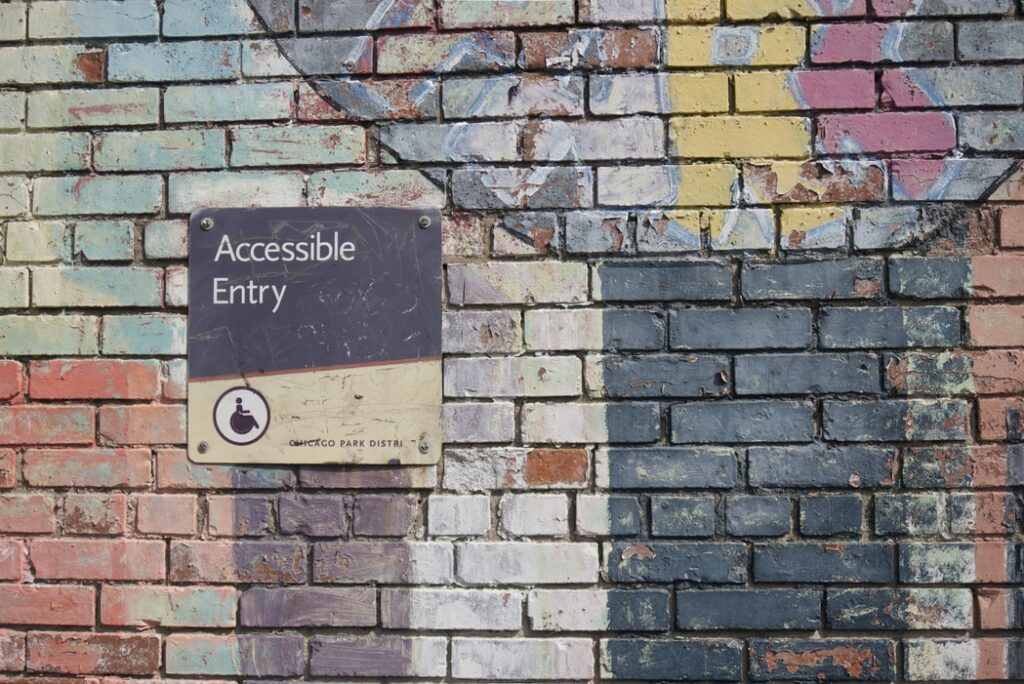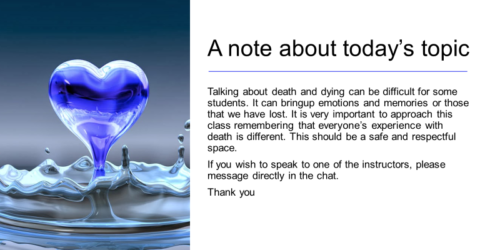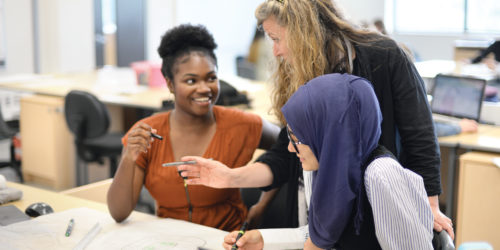
A Foundational Understanding of Accessible Teaching and Learning at Conestoga College
Across Ontario colleges and universities, there are growing numbers of students with disabilities (Learning Disabilities of Ontario, 2019). At Conestoga, we have seen our numbers of students with disabilities steadily increase. For example, across two academic years (i.e., 2017-2018 and 2018-2019), Conestoga had a 3.5% increase in students with a disability registered at Accessible Learning. Despite these growing numbers, a recent study found that there is a significant gap in Canadian College faculty understandings of disabilities and accommodations, and that addressing misinformation may be the first step to address this gap (Hansen & Dawson, 2020).
Ensuring that students with disabilities, as well as students with diverse backgrounds, can thrive and succeed in their studies is a priority for Conestoga College (see Conestoga’s Strategic Plan 2021-2024, p. 13). And, faculty, at Conestoga, as well as elsewhere in Ontario, “have a legal duty to accommodate the needs of students with disabilities” (OHRC, 2018) and “are responsible for creating an accessible learning environment for all [students]” (Council of Ontario Universities, n.d.).
In this this post, we will define key terms, concepts, and processes for a foundational understanding of accessible teaching and learning at Conestoga College.
What is accessible education?
Accessible Education is the process of designing courses and developing a teaching style to meet the needs of people from a variety of backgrounds, abilities, and learning styles. Just as there is no single way to teach, people learn in a variety of ways; using different instructional methods will help the needs of the greatest number of learners.
Council of Ontario Universities (n.d.)
Accessible education aligns with key legislature, such as the Ontario Human Rights Code, the Accessibility of Ontarians with Disabilities Act, as well as Conestoga institutional policies. It considers learner characteristics (e.g., (dis)abilities, age, learning style, gender) and proactively aims to remove barriers to learning. Accessible education does not compromise on academic requirements, standards, or rigour. Instead, accessible education is consistent with recognized best practices in teaching (e.g., Universal Design for Learning).
What is a disability?
The term disability covers a broad variety of conditions. And, this term is complex and evolving. Currently, the Ontario Human Rights Commission (as well as our Conestoga Student Accommodation Policy) defines disability with the below quote:
- “any degree of physical disability, infirmity, malformation or disfigurement that is caused by bodily injury, birth defect or illness and, without limiting the generality of the foregoing, includes diabetes mellitus, epilepsy, a brain injury, any degree of paralysis, amputation, lack of physical co-ordination, blindness or visual impediment, deafness or hearing impediment, muteness or speech impediment, or physical reliance on a guide dog or other animal or on a wheelchair or other remedial appliance or device,
- a condition of mental impairment or a developmental disability,
- a learning disability, or a dysfunction in one or more of the processes involved in understanding or using symbols or spoken language,
- a mental disorder, or
- an injury or disability for which benefits were claimed or received under the insurance plan established under the Workplace Safety and Insurance Act, 1997.”
What is an academic accommodation?
According to Conestoga’s Student Accommodation Policy, an academic accommodation can be defined as:
“An academic accommodation is an individualized adjustment to how a student accesses or participates in a course or program, and can include instructional and/or environmental changes. Academic accommodations do not typically alter the learning outcomes or essential program requirements.”
In short, accommodations alter how a student learns or meets the learning outcomes. Examples of academic accommodations available at Conestoga include, but are not limited, to extra time on tests, visual aids, use of technology (e.g., text-to-speech readers), and preferential seating (e.g., quieter location during tests for students with sensory needs).
How are academic accommodations determined at Conestoga?
Student accommodations are determined during an intake appointment between a student and an Advisor from Accessible Learning. Accommodations are put in place based on key pieces of information: (1) Doctor’s documentation that notes any specific disability-related needs of the student (note: this document does not necessarily include a diagnosis or details of the disability); and (2) the nature of the program, the learning outcomes, and program expectations.
A key part of the accommodations process is the student connecting with their Accessibility Advisor for any needed changes or adaptations to accommodations. Student accommodations can be adapted at any time during their studies, so as faculty, if you are unsure about an accommodation for a student, always check back in with the Accessibility Advisor.
For a step-by-step guide on the academic accommodation process for Conestoga students, please see this resource, which was created by Teaching and Learning in collaboration with Accessible Learning.
Is confidentiality around student accommodations important?
Yes, student privacy and confidentiality are incredibly important. Students may or may not choose to disclose a disability to their Accessibility Advisor. They are not obligated, in any way, to provide details about their diagnosis or disability to an Accessibility Advisor or a Professor. Only disability-related needs are presented to an Accessibility Advisor. This follows the Personal Health Information Protection Act (PHIPA, 2004). Learn more about about PHIPA, FIPPA, and other privacy issues at Ontario Colleges and Universities.
As faculty, it is good practice to honor student confidentiality in many ways. For example, faculty should not mention a student’s accommodations in front of other students; this should only be communicated in private with the student (e.g., in a private e-mail, or in a private meeting). When exploring an issue around a student’s accommodation, faculty should only e-mail the student and their Accessibility Advisor without copying other individuals on communications. And, faculty should not discuss information about student accommodations with colleagues.
How do academic accommodations work in Ontario Colleges?
One thing to note is that in outcomes-based education such as that at Ontario Colleges, we are not able to offer students modifications, which entail adjusting learning outcomes for students. Each student must achieve the course and program outcomes. This may surprise some students and parents as, in the Ontario high school systems, modifications can occur to assist students in achieving a high school diploma. We have a few special programs, such as Community Education Through Co-Operative Education, where modifications occur to allow students with significant learning needs to achieve a specialized designation. Generally, however, it is not allowed for faculty to change the expectations for a course. Always consult with an Accessibility Advisor if you have questions.
For more on accessible education at Conestoga, check out this resource about the Student Accommodation Process and read our post about Accommodating and Supporting Students with Disabilities. If you’d like to learn more about accessible teaching and learning, feel free to register for our Exploring Accessible Teaching course within our Inclusive Teaching Practices for Post-Secondary Courses micro-credential. And, if you have more questions about accessible teaching and learning at Conestoga, reach out to Teaching and Learning.
References:
Council of Ontario Universities (n.d.). Accessible Campus. https://accessiblecampus.ca/tools-resources/educators-tool-kit/introduction-accessible-education/
Hansen, K. D. & Dawson, D. L. (2020). ‘We can do better’: Community college faculty preparedness for teaching students with learning disabilities. Journal of Diversity in Higher Education, 13, 309-319.
Learning Disabilities Association of Ontario. (2019). Accommodating Students with LDs in Post-Secondary Studies. https://www.ldao.ca/wp-content/uploads/Accommodating-Students-with-LDs-in-Postsecondary-Studies-2019.pdf
Ontario Human Rights Commission. (2018). Policy on accessible education for students with disabilities. http://www.ohrc.on.ca/en/policy-accessible-education-students-disabilities






